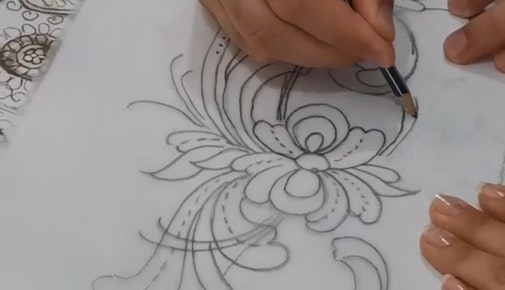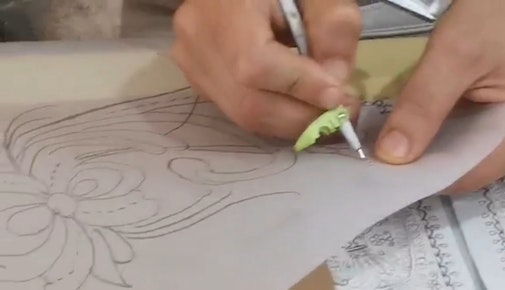Exercise: Learning the heritage technique
- Produced by
- Asociatia Perseidele
- Authors
- Carmen, Victoria Ghilas, Maria Sârbu,

This working approach can be adapted to any context where the aim is to learn the craft techniques for making a heritage object based on art. In this case painting is the field of artistic expression. It is beneficial to work with a heritage expert to discover all the rich detail of a traditional craft.
Name of the exercise: Learning the heritage technique (Painting a traditional ornament)
Working method: Painting, the experiment
Heritage area: Technical.
Aim and targets of this exercise: Learning the technique of working and developing practical skills.
Why/How does this exercise ensure transformation (progress) in learning: Participants will paint a traditional ornament. They will put into practice what they learned from the artists.
Ideal number of participants: 4–5 people in a group, several groups can work simultaneously under the guidance of 2–3 folk artists.
Duration: 1–2 hours.
Materials needed: Pieces of wood, paints, water, brushes, stencils, patterns printed on paper, tracing paper, talcum powder, bure/s.
Step-by-step exercise description: Participants will paint a Saxon ornament. The artists select several designs from their database of ornaments printed in colour on paper. They start with a few simple designs because the participants are beginners. Each person receives the printed pattern. It will be converted to the template on the calc. A thin layer of talcum powder is then spread on the piece of wood to copy the shape of the template. Once the outline has been established, each person paints the ornament in the colours of the pattern. The paints are well mixed. The artist helps them when the participants can't manage.
Other key issues: Since the participants are painting for the first time it is considered an experiential activity.
Hints for the trainer: Participants will repeat the exercise several times, each time with a different ornament. It is advisable to alternate motifs: floral, zoomorphic, geometric.








